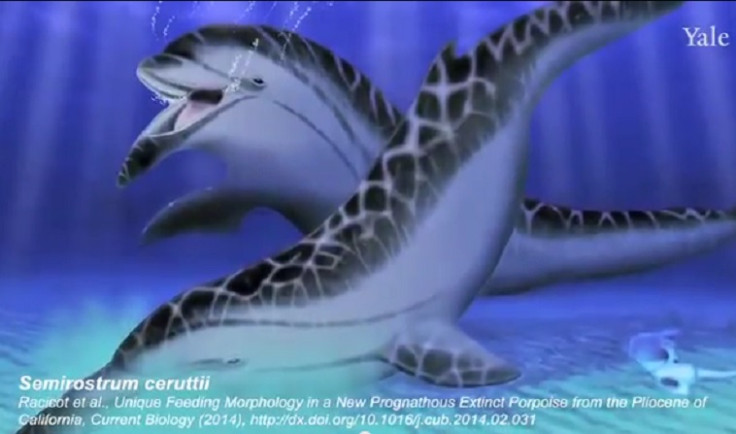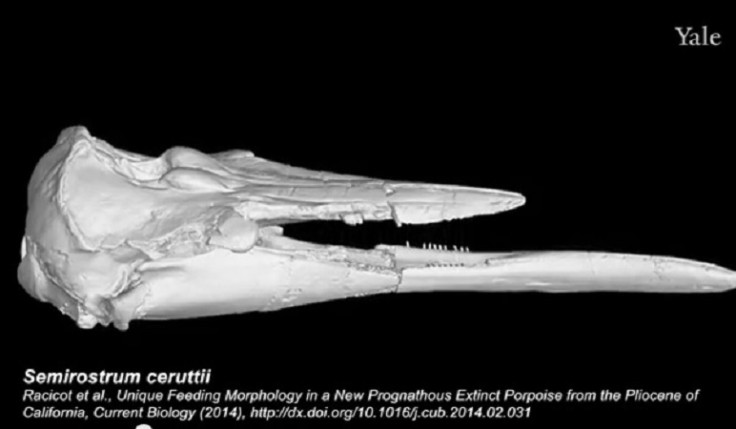Extinct Big-Jawed Porpoise Fossil Discovered off California Coast
A "bizarre" extinct species of porpoise has been discovered in California with a ginormous lower jaw.
The species, called Semirostrum ceruttii, lived between 1.5 to 5.3 million years ago, along 450km of the California coast.
Its lower jaw extended out much further than its upper jaw, researchers from Yale University wrote, saying this was probably so the creature could feel for pray on the bottom of the ocean.
The lower jaw measured 85cm, compared to a typical symphysis of a crown porpoise that is just two centimetres.

The team believes the porpoise probably dug for food lodged in the seabed with its lower jaw. Modern porpoises hunt in the water, preferring in-shore, bottom dwelling and mid-water prey.
Published in the journal Current Biology, researchers discovered a skull specimen of Semirostrum in 1990 but only in recent years started to analyse the fossil.
Lead author Rachel Racicot said: "The extinct porpoise is a bizarre new animal, with the mandible extending well beyond the beak-like snout, which it may have used for probing and 'skimming' in the substrate. Although this morphology has been recorded in birds and fish, this is the first described mammal with this anatomy.

"This is unique anatomy for a mammal. And it tells us that porpoises once searched for food in a very different way than they do now."
CT images of the creature showed a long thin and toothless jaw with a fused mandible. Scans showed sensory structures in the lower jaw that are similar to those found in seabirds that use their lower jaws to help them feel for food at night.
Further investigations showed the porpoise species had smaller optical canals, suggesting it had poor eyesight compared to modern species, meaning its huge lower jaw was important to find food.
The researchers also note that Semirostrum was probably similar to today's freshwater river dolphins.
© Copyright IBTimes 2025. All rights reserved.





















